The anteater was named in 1758 by the father of modern taxonomy, Carl Linnaeus. The Greek name for the anteater, Myrmecophaga tridactyla, translates to “three fingers,” believed to be a name based on the creature’s unique claws.
Anteaters are found throughout South and Central America, where they reside in grasslands, tropical forests, and rain forests. The anteater is not only unique in appearance, but in the way it consumes food. Read on to learn more about the anteater.
Description of the Anteater
The anteater is a large, insectivorous mammal that is also known as the “ant bear,” due to its unique characteristics. Native to South and Central America, the anteater can be identified by its long, bushy tail, elongated muzzle, and trademark flicking tongue.
The anteater’s tubular snout makes up the majority of its head, but is still small compared to the rest of its body. Anteaters vary in size from the silky anteater, at 14 inches (35 cm) tall, to the giant anteater, which is the largest species of anteater, reaching lengths of over 7 feet (just over 2 meters), and 140 lbs (63 kg) in weight.
Lesser Known Anteater Types
Apart from the Giant Anteater, there are three other lesser known types of anteaters that are still in existence.
The Silky Anteater
Distributed throughout South America, the Silky anteater is the smallest species of anteater in the world. At approximately 6 inches (153 mm) in size, and weighing less than half a pound (about 170g), this anteater is no bigger than the average human hand. The silky tiny anteater has a long grasping tale, a tubular mouth, and elongated snout.
As the anteater’s name suggests, the hair coat is soft and silky, seen in colors ranging from golden yellow to grey. Like all anteaters, the silky anteater does not have teeth, just a sticky tongue to catch tree insects, and long claws to dig its food out. Silky anteaters are nocturnal, meaning they are most active at night. This makes them difficult to locate.
The Northern & Southern Tamandua
The Northern and Southern Tamandua anteaters are relatively the same, but located in different regions of the world. The Northern Tamandua can be found throughout tropical regions of Central America, whereas the Southern Tamandua can be found in South America.
These anteaters are often called the “lesser anteater,” or “collared anteater,” due to its strong black markings from the shoulder to its rump. The portions of the Tamandua’s body that aren’t covered by this trademark vest can be colorations including black, brown or blonde.
The adult Tamandua’s body length is between 13 and 35 inches (33-88 cm); with a prehensile tail, which means it can grasp things, of about 15 to 26 inches (38-66 cm); and it weighs between 3-18 pounds (1.5-18.5 kg). The Tamandua anteater is mainly nocturnal, but actively hunts for bees, termites, and ants to eat when it is awake.
Interesting Facts About the Anteater
The anteater has always been an animal of interest and curiosities. From its unusual appearance, to that long, sticky tongue, we learn more and more interesting facts about the anteater every day.
- No Teeth – Anteaters are edentate, which means they have no teeth.
- Long Tongue – The anteater’s tongue can stretch to 2 feet (60 cm) in length, protruding to capture prey from hard-to-reach places.
- Fast Tongue – The anteater’s tongue can flick 160 times per minute. Anteaters need to eat fast to avoid painful stings from its prey.
- Food – Anteaters eat 35,000 insects a day. Ants and other insects are tiny, so this 70-140 pound mammal needs to scoop them up by the mouthful.
- Eyesight – The anteater’s eyesight is rather poor, so he uses his sense of smell, rather than sight to locate meals.
Habitat of the Anteater
Anteaters are found throughout South and Central America, where they reside on grasslands, as well as in vast tropical rain forests. However, the anteater can be found in a number of similar habitats, provided there is enough prey to sustain the species’ diet.
Distribution of the Anteater
The anteater is native to South and Central America, but has been known to roam from northern Argentina to Honduras. The anteater once lived in Guatemala, Costa Rica, Belize, Uruguay, and the Andes – in fact, archaeologists have found fossil remains of the anteater as far north as Sonora, Mexico – but due to the loss of natural resources, they no longer reside in these areas of the world.
Diet of the Anteater
Despite the Anteater’s given name, this mammal will gladly dine on ants, termites, bees, and occasionally the sweet honey of a hive. An anteater must eat thousands of insects each day to meet his dietary needs – that’s about 35,000 insects each day – but it’s no problem for this unique creature.
The anteater’s 16-inch (about 40 cm) tongue is sticky with saliva, and covered with tiny spines that can easily snag up a mouthful. Needing so many insects in its daily diet, the anteater spends most of its day eating or searching for his next meal.
Anteater and Human Interaction
The anteater is a shy, timid mammal that will typically avoid human interaction. When threatened, the anteater has been known to seriously injure, and the giant anteater has even kill humans with its sharp, four-inch claws.
Domestication
Anteaters are not domesticated animals. Even while cared for in a zoo environment by professional caretakers, reports of anteaters mauling zookeepers are known. In another incident, two hunters were killed as they came upon an anteater, startling the mammal. It attacked the two men defensively.
Does the Anteater Make a Good Pet?
Anteaters do not make good pets. These solitary animals would rather be left alone and avoid human interaction completely.
Anteater Care
In captivity, the anteater is fed a mixture of ground beef, mealworms, eggs, and milk. Anteaters are common residents of zoos, wild life conservations, and national parks, where they are provided a similar environment to that which is found in nature.
Dense brush and tall grass is ideal for the anteater to carve a shallow space in the ground for resting. Tall trees that allow the anteater to climb, and pools of water that allow it to swim, should also be provided.
Behavior of the Anteater
The anteater is generally a solitary animal, spending the majority of its life alone. Female anteaters are accompanied by their young, which can be seen hitching a ride on their mothers’ backs.
In general, anteaters are not aggressive, but when threatened, the anteater can become fierce. Using its tail for balance, the anteater will rear up on his hind legs, and lash its attacker with its four-inch-long claws to protect itself.
Reproduction of the Anteater
Anteaters can mate any time of year, whenever the female goes through her estrous cycle, which is the time her body can conceive. When breeding, the male and female anteater stay with one another for several days, to ensure conception before parting ways.
The gestation period of the anteater, which is the length of time the fetus stays in the womb, lasts roughly 190 days. At this rate, anteaters produce a single offspring once a year.
Beliefs, Superstitions, and Phobias About the Anteater
The anteater has been a topic of mythology and folklore for generations, from superstitions to common folktales. The people of the Amazon Basin refer to the anteater as a trickster to the jaguar, and the Shipibo-Conibo people of the Amazon rainforest share a common belief, telling a tale of a breath-holding contest between the jaguar and the anteater.
It is said that the two natural-born enemies removed their pelts and submerged themselves into the water to conduct the challenge. The anteater jumped out, stealing the jaguar’s pelt, leaving the jaguar naked.
According to Yarabara myth, the anteater’s tiny mouth is a curse of Mother Nature. The myth goes that the evil ogre transformed into an anteater as punishment from the sun God. The Kayapo people wear masks mimicking the anteater, declaring any man who stumbles while wearing the mask, or a woman that touches the mask, will die, or suffer a physical illness.

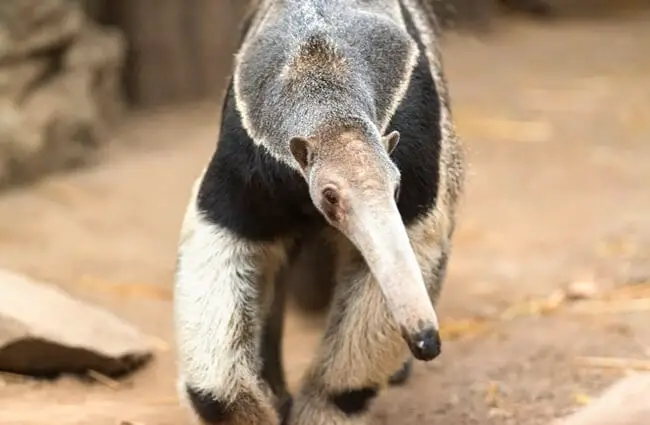
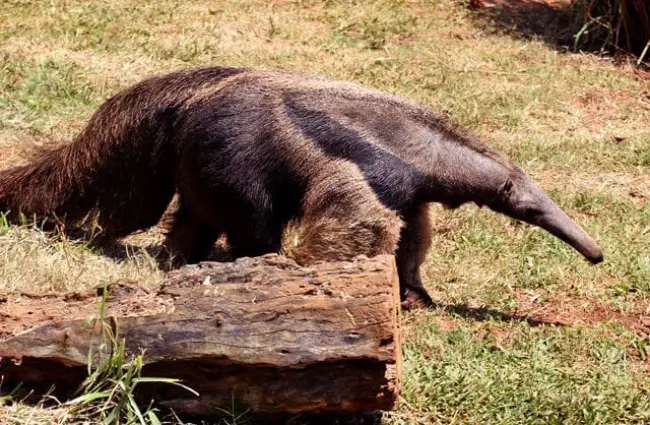
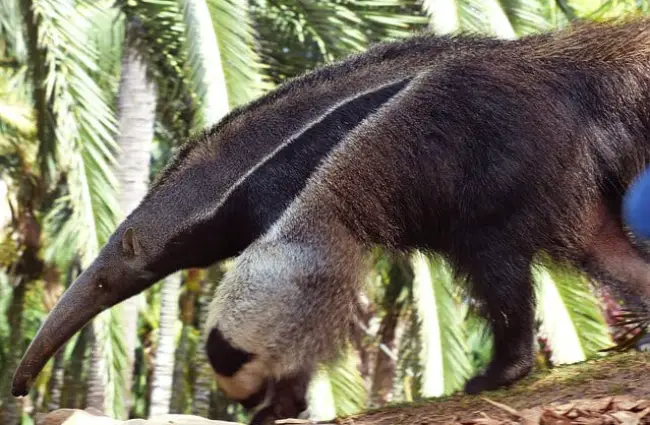
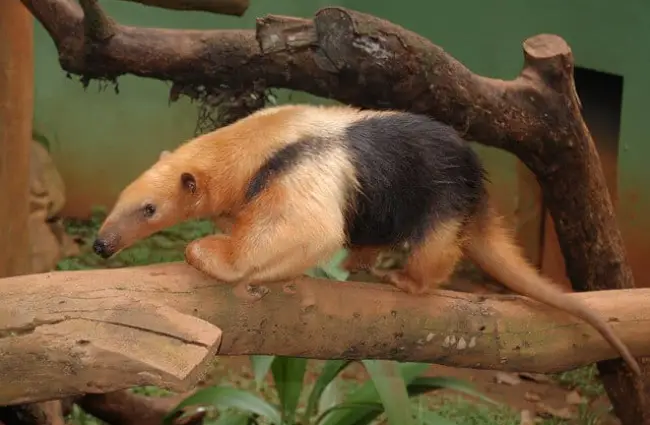




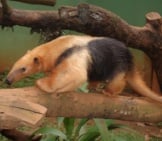
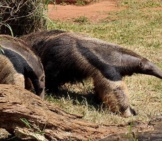










![Red Angus Closeup of a beautiful Red Angus cowPhoto by: U.S. Department of Agriculture [pubic domain]https://creativecommons.org/licenses/by/2.0/](https://animals.net/wp-content/uploads/2020/03/Red-Angus-4-100x75.jpg)

